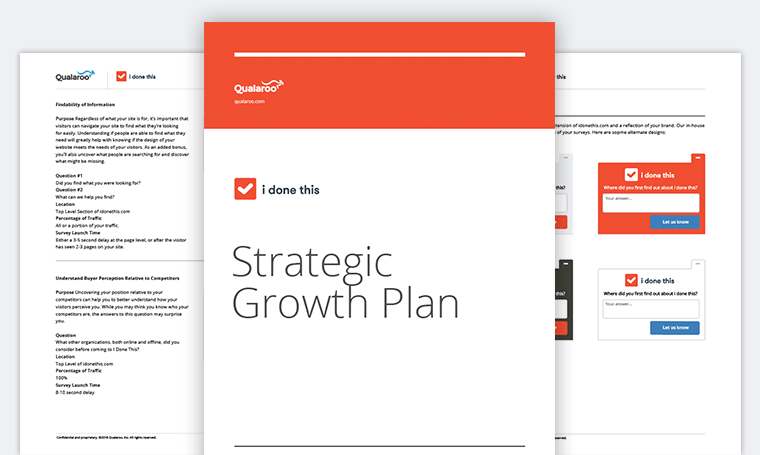Congratulations on making a sale!
But before you move on to the next customer, there’s one more task to complete. You need to conduct a post-purchase survey.
Doing so will help you build trust, loyalty, and advocacy among your customers and also identify potential growth opportunities.
Post-purchase surveys are an excellent way to learn what your customers think, feel, and want from you. They help you improve your products, services, and post-purchase process.
But what questions should you ask? What are the best practices for conducting these surveys? And what channels should you use to reach out to your customers?
This blog will answer all your questions. Let’s dive in.
What Is a Post-Purchase Survey?
Post-purchase survey is a specialized form of customer feedback survey sent to customers immediately after they have purchased a product or service from you.
It can help you understand how satisfied they are with your product or service, what factors influenced their purchase decision, and how likely they are to buy from you again or recommend you to others.
Compared to other types of customer feedback surveys, post-purchase surveys are unique in their focus on a specific purchase experience rather than a broader customer experience or website usability.
They are time-sensitive and should be sent as soon as possible after the purchase to ensure that the customer’s memory is fresh and their emotions are high.
7 Compelling Benefits of Post-Purchase Surveys
Post-purchase surveys offer several benefits in understanding customer satisfaction and improving products or services. Here are some of the key benefits of post-purchase surveys:
1. Gain Insights Into Customer Experience
Gaining insights into customer experiences, preferences, and satisfaction levels can be achieved by conducting post-purchase surveys. These surveys offer a platform for customers to voice their opinions and provide feedback.
By utilizing these surveys, you can gain a better understanding of your customer’s needs and desires, which can be invaluable for improving your business.
2. Identify Areas for Improvement
Gathering feedback from customers after they make a purchase can help you spot any issues or areas of your products or services that need improvement. By considering what customers have to say, you can make necessary changes or improvements to meet their needs and increase overall satisfaction.
3. Enhance Customer Loyalty and Retention
Actively seeking feedback from customers after their purchase is an effective way to demonstrate your commitment to customer satisfaction. This shows that you care about their opinions and experiences and that you want to improve your products or services based on their needs and preferences.
You can improve customer loyalty and retention rates by addressing any issues or concerns raised through the surveys. This can make them feel more valued and connected to your brand and increase their likelihood of buying from you again and recommending you to others.
Also, you can use the feedback to personalize future interactions and build stronger relationships with your customers.
4. Refine Product or Service Offerings
Post-purchase surveys play a crucial role in product or service development. The feedback gathered helps to refine current offerings, identify new opportunities, and create personalized solutions to meet the needs of each customer.
Post-purchase surveys provide insights that can guide future development and ensure customers are satisfied with their experience.
5. Increase Customer Satisfaction and Advocacy
Actively listening to the voice of customers through post-purchase surveys and taking appropriate action can have a significant impact on customer satisfaction.
Satisfied customers can become brand promoters, spreading the word about your products or services to their family, friends, and colleagues. This positive word-of-mouth marketing can be a valuable asset to your business.
Recommended Post: 11 Crucial Customer Satisfaction Metrics You Should Track
6. Measure and Track Customer Sentiment
Frequent post-purchase surveys can be helpful for keeping track of customer sentiment. By consistently gathering feedback, you can discern trends, patterns, and changes in customer perceptions.
This proactive approach can help address issues before they become major problems and provide data-driven guidance for decision-making.
Also Check: Sentiment Analysis: Guide to Understanding Customer Emotions
7. Improve Customer Support and Experience
Post-purchase surveys provide an opportunity to identify areas where customers may require additional support or assistance. Knowing their needs, you can improve customer support processes and enhance the customer experience.
Ask the Right Post-Purchase Survey Questions
By asking appropriate post-purchase customer survey questions, you can gain valuable insights that can help you enhance the customer experience and strengthen your relationships with them.
General Feedback
Here are some post-purchase survey questions to seek feedback and suggestions from customers:
- Is there anything specific that you really enjoyed about your purchasing experience with us?
- How likely are you to recommend our company to others based on your experience?
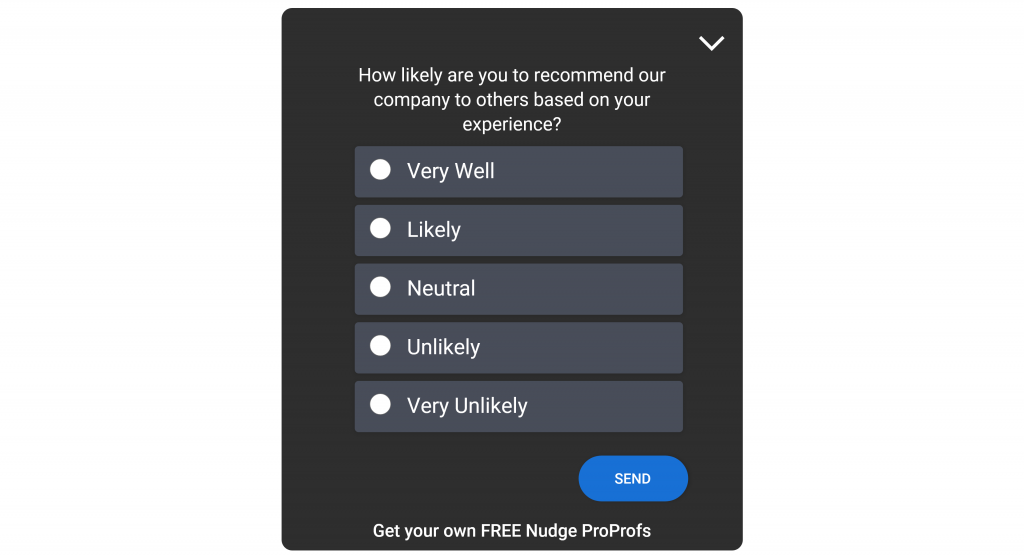
- Any ideas for new products or services you want us to offer?
- Did you face any issues while making a purchase?
- How satisfied are you with your overall purchase experience with our company?
- Is there anything in particular that we could improve upon in our products or services?
Brand Perception and Loyalty
You can use the following post purchase customer survey questions to enhance your survey regarding brand perception and loyalty after a purchase:
- How likely are you to recommend our brand to others?
- How familiar are you with our brand?
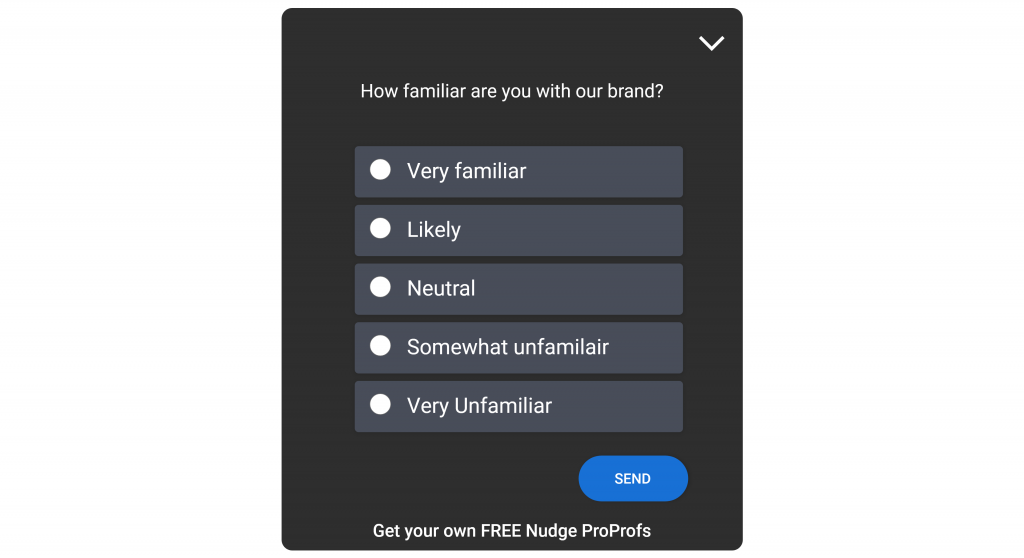
- How innovative and unique is our brand compared to our competitors?
- How likely are you to buy again from us in the future?
- How would you rate your overall perception of our brand?
Purchase Decision
Here are some questions to understand your customer’s purchasing decision:
- How important were the product features and specifications in your decision-making process?
- Did any promotions, discounts, or incentives influence your purchase decision?
- Did recommendations from friends, family, or colleagues impact your buying decision?
- How crucial was the price and affordability in your purchase decision?
- Did positive customer reviews influence your decision to purchase?
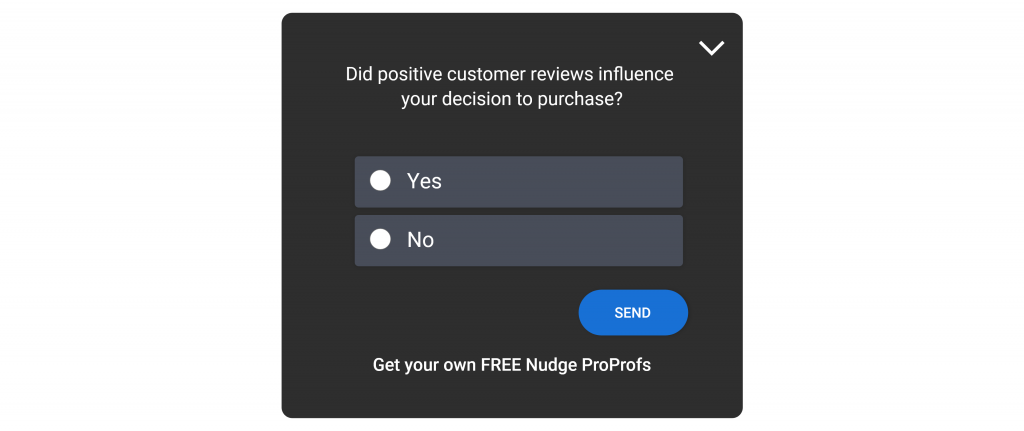
- What key factors influenced you to choose our company to make a purchase?
- Did customization or personalization options affect your purchase decision?
Purchase Experience
Consider including these questions in your survey to better understand your customers’ experience:
- How satisfied are you with our product variety and selection?
- Did you face any issues during checkout?
- Were you able to find the products you wanted easily?
- Did you encounter any technical issues while shopping?
- How user-friendly do you find our website/store interface?
- How would you rate the ease of browsing our website/store?

- Did the product descriptions and images help you make your purchase decision?
- How would you rate your overall purchase experience with our company?
Also Read: 70+ Best Ecommerce Survey Questions To Grow Your Business
Product Quality
Below are some survey questions about the product quality that you may include in your post-purchase survey:
- Did the product meet your requirements?

- Please rate the quality of the product you purchased.
- Would you purchase similar products from our company based on its quality?
- How likely are you to recommend this product based on its quality?
- Did you experience any defects or issues with the product upon receiving it?
- How would you rate the durability of the product?
Delivery Process
Here are some survey questions you can ask after a purchase to improve the delivery process:
- Did you receive clear and accurate tracking information for your shipment?
- How satisfied are you with the timeliness of the delivery of your order?
- Were there any difficulties or challenges with receiving your order?

- Was the delivery speed efficient as per your expectations?
- Were you informed about any changes or updates regarding your delivery?
- How was the packaging of your order in terms of protection and presentation?
- Did you face any issues or delays during the delivery process?
Collect Pricing Feedback
Here are some questions on pricing that you can consider adding to your post-purchase survey:
- Did you find the pricing of the product/service reasonable?
- How would you describe the affordability of the product/service?
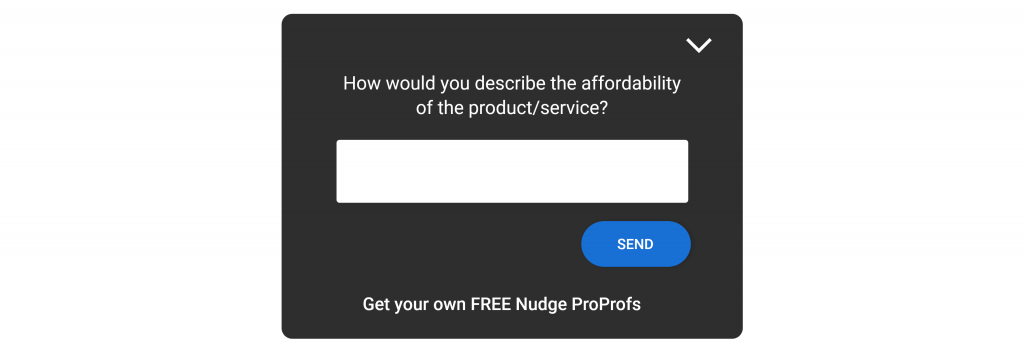
- How satisfied are you with the pricing options available for the product/service?
- Were there any hidden costs or unexpected charges associated with the purchase?
- Did you encounter any challenges or confusion regarding the pricing details?
- Did you perceive the product/service to be worth the price you paid?
- How would you rate the value for money of the product/service you purchased?
Inspiring Post-Purchase Survey Examples From Top Brands
In this section, we will look at two post-purchase survey examples you can use for inspiration.
Example 1: Apple
Apple is known for its high-quality products and loyal customers. To maintain its reputation and customer satisfaction, Apple uses a simple post-purchase survey that asks customers how likely they are to recommend their products to others.
This question is based on the Net Promoter Score (NPS) metric, which measures customer loyalty and satisfaction. The survey also allows customers to provide additional comments or suggestions.
Apple’s post-purchase survey is effective because it is short, simple, and focused on one key question. It also allows customers to share their opinions and feedback, which can help Apple improve its products and services.
Example 2: Home Depot
Home Depot is a leading home improvement retailer that offers a wide range of products and services. To understand its customers’ needs and preferences, Home Depot uses a post-purchase survey that asks customers about their shopping experience, product quality, customer service, and overall satisfaction.
The survey also offers customers the chance to win a $5,000 gift card as an incentive to complete the survey.
Home Depot’s post-purchase survey is effective because it covers multiple aspects of the customer journey and provides valuable insights for the company. It also motivates customers to participate in the survey by offering a generous reward.
FREE. All Features. FOREVER!
Try our Forever FREE account with all premium features!
Best Practices for Creating Post-Purchase Survey
Here are some best practices for creating a post-purchase survey:
- Ask Relevant Questions: Craft survey questions directly related to the customer’s recent purchase experience. Focus on areas where feedback can help identify strengths and areas for improvement in your products or services.
- Keep Surveys Concise: To ensure higher response rates, keep your post-purchase surveys concise and to the point. Avoid overwhelming customers with lengthy surveys and prioritize the most important questions.
- Use a Mix of Question Types: Incorporate a mix of question types, such as multiple-choice, rating scales, and open-ended questions, to gather comprehensive feedback. This allows for a combination of quantitative data and qualitative insights.
- Timing Is Key: Send post-purchase surveys at an appropriate time, ideally shortly after the customer has received their purchase. This ensures their experience is fresh in their minds and increases the likelihood of capturing accurate feedback.
- Incentivize Participation: Consider offering incentives or rewards to customers who complete the post-purchase survey. This can help increase participation rates and motivate customers to provide valuable feedback.
- Analyze and Act on Feedback: Collecting feedback is just the first step. Analyze the responses thoroughly, identify trends or patterns, and take appropriate action based on the feedback received. Address any issues or concerns raised and use the insights to continually improve your products or services.
By following these best practices, businesses can create effective post-purchase surveys that generate valuable insights and drive improvements in the customer experience.
Find the Right Channels for Conducting Post-Purchase Surveys
When planning to share post-purchase surveys, it is important to consider the right channels to reach your customers effectively and maximize survey participation.
Here are some recommended channels for sharing post-purchase surveys:
- Email: Email remains one of the most common and effective channels for reaching customers with post-purchase surveys. Send a personalized email to customers shortly after their purchase, including a link to the survey. Personalization and timely delivery can increase response rates.
- Order Confirmation Page: After a customer completes a purchase, consider displaying a survey invitation or providing a direct link to the survey on the order confirmation page. This leverages the moment customers are engaged with your brand and more likely to provide feedback.
- Mobile Apps: If your business has a mobile app, consider incorporating the post-purchase survey within the app. This allows for a seamless and convenient survey experience for customers who have already expressed their interest by downloading and using your app.
- Social Media: Utilize social media platforms to promote and share the post-purchase survey. This can include posting survey links on your business’s social media accounts or using social media advertising to target recent customers.
- Website Popups: Display a popup invitation on your website to capture survey responses from visitors who have recently made a purchase. This can be an effective way to engage with customers already visiting your site.
- SMS/Text Messages: For customers who have provided their phone numbers during the purchase process, consider sending an SMS or text message with a survey link. This channel can be particularly effective for businesses with a strong mobile customer base.
It is important to select the channels that align with your customers’ preferences and habits. Consider testing different channels and monitoring response rates to determine the most effective methods for your specific audience.
How Qualaroo Helps in Post-Purchase Survey?
Qualaroo is a user feedback software that lets you create and launch post-purchase surveys on your website or app. You can collect valuable insights from your customers and use them to improve customer satisfaction.
Here are the ways Qualaroo helps to enhance post-purchase surveys:
Link NudgeTM Surveys
One of Qualaroo’s survey features – link-nudge – can help you boost customer engagement, response rates, and the quality of feedback you receive following a purchase.
Qualaroo’s in-context surveys achieve a 10-30% response rate due to their immediate and seamless placement in the user experience.
By collecting feedback at the right time, you can pinpoint areas for improvement, track customer satisfaction, and take data-driven steps to enhance the overall post-purchase experience.
Skip and Branching Logic
Qualaroo’s question branching feature allows you to create dynamic and personalized post-purchase surveys that adapt to your users’ responses.
With this feature, you can skip irrelevant questions, show different questions based on previous answers, or redirect users to different pages or offers based on their feedback.
Further Read: A Complete Guide to Skip Logic and Conditional Branching Surveys
Advanced Reporting
Qualaroo provides powerful analytics and reports to help you understand and act on your survey data. You can use Qualaroo’s AI-powered sentiment analysis to gauge the emotions and opinions of your users and identify the pain points and opportunities in your business growth.
Expert-Designed Templates
Qualaroo provides a range of pre-built templates that you can use to create and deploy surveys within minutes. These templates can be personalized as per your requirements or used as they are to gather feedback from customers.
You can use Qualaroo’s post-purchase survey templates to begin immediately.
Implement Post-Purchase Surveys in Your Online Business
Post-purchase surveys are a powerful tool for online businesses to collect valuable customer feedback, improve their products and services, and increase customer loyalty and retention.
Following the best practices and questions we discussed in this article, you can design and conduct effective post-purchase surveys to help you achieve your business goals and delight your customers.
If you haven’t implemented post-purchase surveys in your business yet, now is the time to start. You’ll be amazed by the insights and benefits you’ll gain from them.
Learn More About Post-Purchase Surveys
How long should a post-purchase survey be?
There is no definitive answer to this question, as it depends on various factors, such as the type of survey, the channel of delivery, the goal of the survey, and the characteristics of the customers.
What happens when post-purchase surveys are too long?
When post-purchase surveys are too long, they can reduce the response rate and the quality of the feedback. Customers may lose interest, get bored, or feel overwhelmed by too many questions. They may also skip some questions, give inaccurate or dishonest answers, or abandon the survey altogether.
How can I create a post-purchase survey for my e-commerce business?
There are different ways to create a post-purchase survey for your e-commerce business, depending on the channel and the format you want to use. For example, you can use online survey platforms like Qualaroo to create and send post-purchase surveys via email, SMS, or in-app messages.
FREE. All Features. FOREVER!
Try our Forever FREE account with all premium features!

 We'd love your feedback!
We'd love your feedback! Thanks for your feedback!
Thanks for your feedback!


